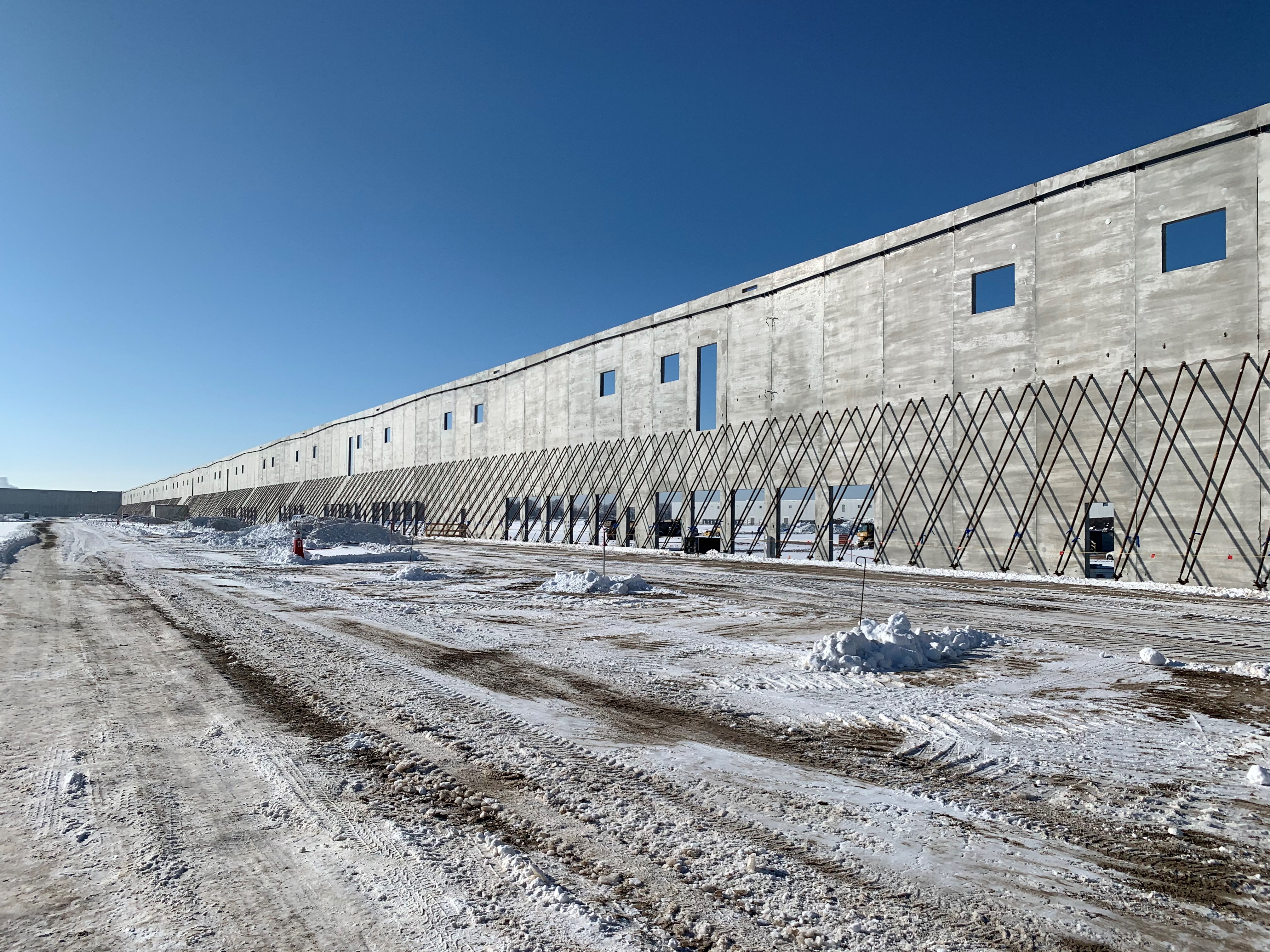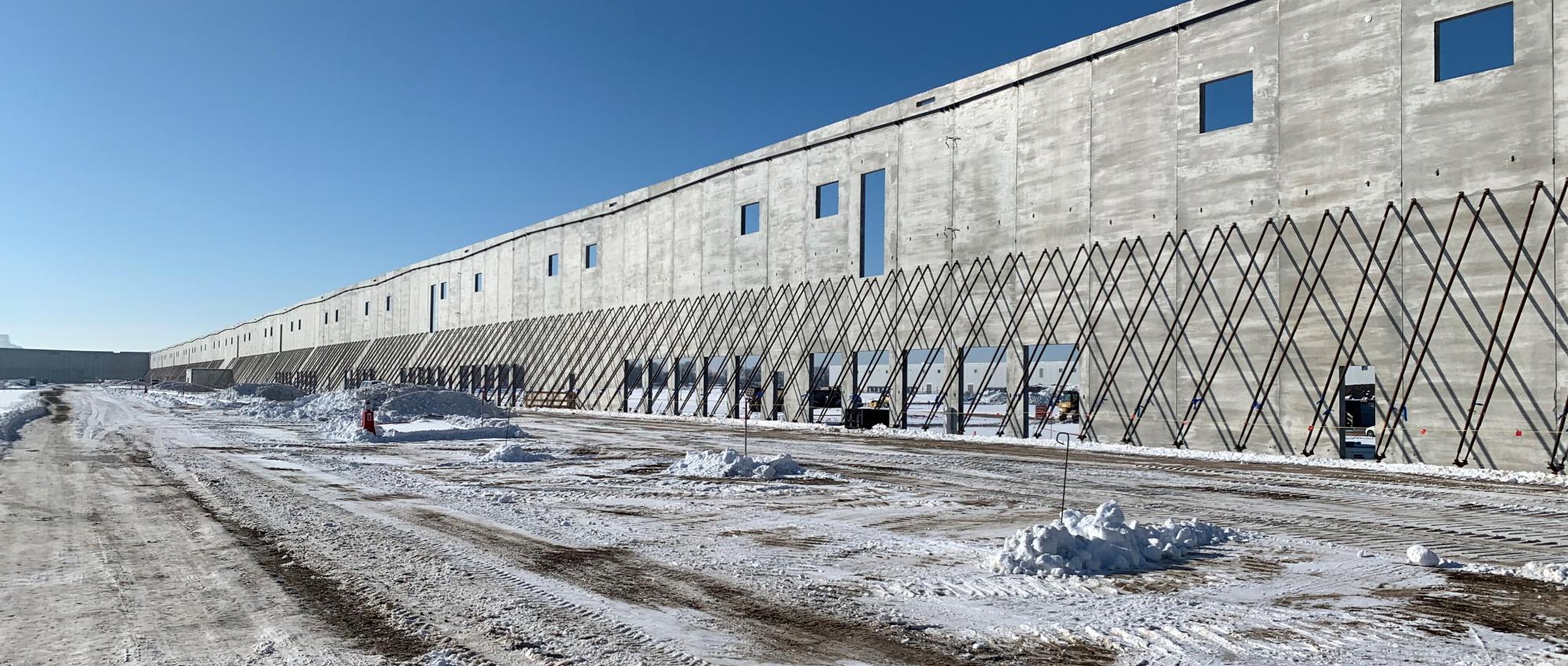Planning for Winter Construction - Benefits of Precast
For ATMI Precast, it is that time of year when cold weather plays an immense role in the procedures, requirements, and practices that encompass concrete production. Winter conditions present a huge challenge for the construction industry. Pouring concrete is difficult when temperatures drop to near freezing. Placing concrete in cold weather can be impossible once frost sets in unless you take a lot of precautions. Frigid winter conditions not only raise construction costs significantly, but they also slow schedules and reduce worker safety.
Being in the Midwest we are affected by winter weather, yet construction projects can continue year-round. That's because many architects, engineers, and builders know that cold weather construction can easily be completed on time, within budget, and safely by using precast concrete in winter months. Precast concrete makes it possible to complete construction projects even during the extreme weather that comes in cold winter months. Cold weather practices need to be addressed for precast manufacturers, like ourselves, to product quality products that meet specifications.
Depending on the year, we can be affected by cold weather conditions in calendar months from October through April. That is over half the year where construction projects could be delayed or halted due to frost, ice, snow, or chilling winds. Builders plan for this and look for subcontractors like us to provide precast concrete solutions.
Concrete has helped build ever imaginable structure from skyscrapers to bridges and roads. But for all its benefits, it does have downsides. It cannot properly cure when it is too cold when poured outdoors. That is quite the restriction for on-site concrete pours. With concrete projects that are cast-in-place, forms are set, and concrete is mixed on the job site or trucked in from ready-mix plants.
Low temperatures cause concrete that is curing to go inert or stop setting. Freezing during the initial cure before it reaches 5,000 psi compressive strength will cause curing concrete to fail entirely. Either way, casting concrete outside of its temperature tolerance can be a financial disaster.
Luckily, ATMI Precast provides the perfect remedy to eliminating all the problems associated with cold weather pours which is precast. Precast concrete components are carefully constructed inside factory-controlled environments that remove all the risks. This results in regulated units that meet high standards in quality, strength, and design. No matter what the weather condition is outside.
There are many benefits of using precast concrete. The first is that it is designed by knowledgeable engineers. The engineers have had years of training and hands-on experience in casting all types of structural concrete. They work with the architect, project engineer, and construction manager to make sure the right concrete mixtures and additives go into the precast pour.
The second is factory conditions. This means that temperatures are artificially controlled to ensure optimum conditions exist when a component is cast. All concrete casting and curing are done in these conditions which eliminates volatile job variables like unexpected weather drops when a pour has been scheduled and must proceed. This will also save time on the job site. While bad weather can stall cast-in-place projects, this is not a factor for precast as we arrive ready to erect.
The third is quality control. Precast concrete is produced in an environment that allows for superior consistency and quality control. This is ensured by an internal batch plant where the precise aggregate, powder, water, and other additives are mixed at a consistent temperature. There is no guesswork or taking a chance. Consistent labor force daily contributes to the repeatable quality of our precast concrete.
The fourth is strength and durability. Precast concrete provides a long-lasting solution as it grows stronger over time. While other materials deteriorate, studies have shown that precast concrete can provide a service life of more than one hundred (100) years, requiring little or no maintenance.
Lastly, concrete is environmentally friendly which is extremely important in an increasingly eco-conscious world. After water, concrete is the most frequently used material on earth. Made of all-natural materials, it is safe for the environment and can be recycled. Concrete can also incorporate recycled materials.
By choosing precast concrete, you will keep your next project on budget and on time even in those winter months. Click here to discuss your next project with ATMI Precast!

